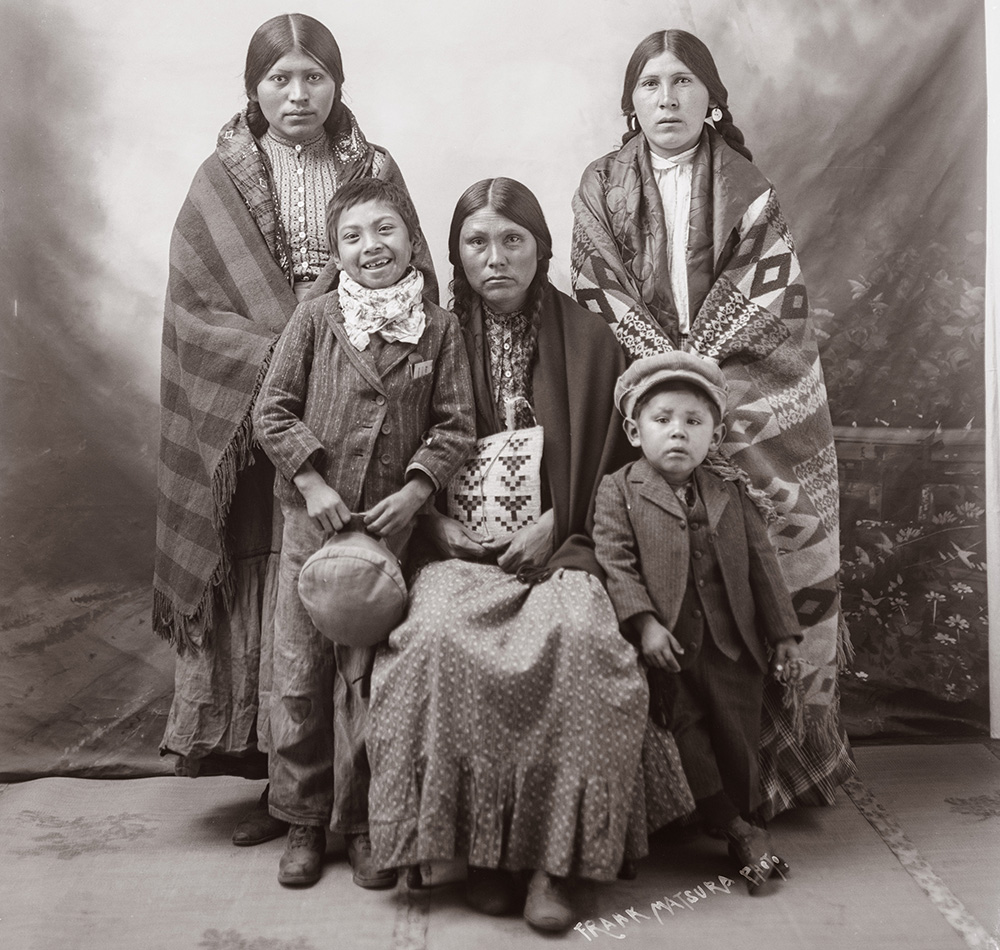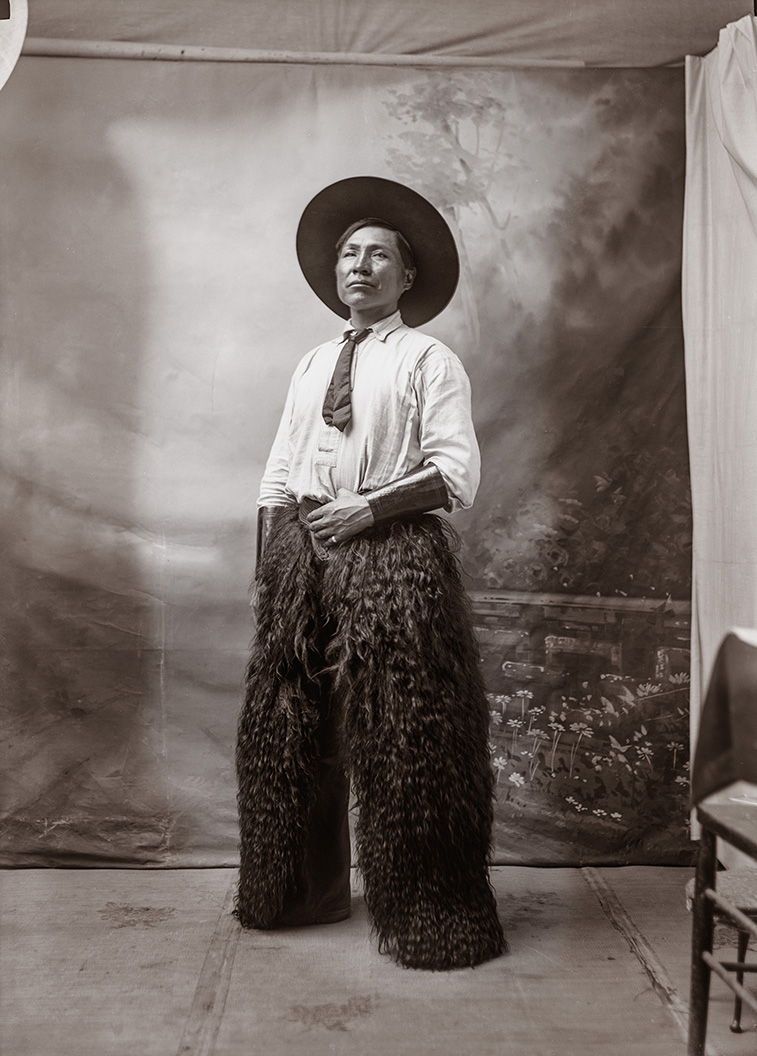
- Details
- By High Desert Museum
Exhibition examines Indigenous representation and identity during a period of regional transformation
 This image is labeled Dick from Riverside and is believed to have been taken by Frank S. Matura around 1910. It’s part of a new exhibition opening February 1, 2025 at the High Desert Museum, Frank S. Matsura: Portraits from the Borderland.Opening February 1, 2025 at the High Desert Museum in Bend, Oregon, Frank S. Matsura: Portraits from the Borderland features large-scale photographs taken by Japanese photographer Frank Matsura of Native people of eastern Washington in the early 1900s.
This image is labeled Dick from Riverside and is believed to have been taken by Frank S. Matura around 1910. It’s part of a new exhibition opening February 1, 2025 at the High Desert Museum, Frank S. Matsura: Portraits from the Borderland.Opening February 1, 2025 at the High Desert Museum in Bend, Oregon, Frank S. Matsura: Portraits from the Borderland features large-scale photographs taken by Japanese photographer Frank Matsura of Native people of eastern Washington in the early 1900s.
These photographs represent some of the most accurate and nuanced images of Native people during this period. Clothing, beaded bags and cornhusk bags from the collections at the Northwest Museum of Art and Culture in Spokane, Wash., which originated the exhibition, and High Desert Museum bring the photographs to life in the exhibition.
Frank Matsura’s life and photographs raise more questions than answers.
Washington State University Associate Professor Michael Holloman (Colville Confederated Tribes), lead curator of the original exhibition, is helping guide the High Desert Museum’s exhibition. He will also soon publish a book about Matsura’s life with PA Press/Chronicle Books. Holloman calls Matsura a fascinating figure—he left Japan, briefly settled in Seattle, where there was a significant-size Japanese immigrant community, and then left again to make a home east of the Cascade mountains in the very rural Okanagan region of the Columbia River Plateau.
Immediately, Matsura became a popular member of the Okanagan community, and 10 years later when he died suddenly, his funeral became a community-wide event. Described as a trickster, Matsura’s playful personality and humor alongside his relationships with people are evident in his photographs. While other photographers, such as Edward Curtis, constructed photographs of Native people to document a culture they believed was vanishing, the authenticity of Matsura’s photographs depict the opposite. They show people and cultures that are still here and still thriving.
“Frank clearly was personable and had a sense of humor, and he clearly developed relationships with the people he photographed,” Holloman said. “As a Japanese immigrant, he was also new to cultures in North America and in the region where he settled, which perhaps freed him to approach portraiture.”
During his lifetime, Matsura attracted many people from across the region for portraiture, including individuals and families from upper Indigenous Plateau tribal communities. Among Matsura’s
total body of work are visually potent, intimate and collaborative studio portraits telling nuanced stories of regional Indigenous identity. His photographs incorporate the performativity and
entertainment that were part of Japanese photographic traditions at that time rather than the more formal portraits prevalent in early 1900s American photography.
 Kiahna Allen is featured in a video that’s part of the exhibition Frank S. Matsura: Portraits from the Borderland. The video explores identity, representation and the continuation of cultural traditions within a contemporary context. These photographs capture dynamic cross-cultural exchanges as Native people continued cultural traditions while also adapting new styles, materials and designs. They also raise questions about what decisions these individuals made about how to represent their identity in front of the camera. Why did Dick from Riverside wear wooly chaps, cuffs and a hat that identified him as an experienced cowboy? Why did some women wear Euro-American style dresses along with dentalium shell necklaces and flat twined bags?
Kiahna Allen is featured in a video that’s part of the exhibition Frank S. Matsura: Portraits from the Borderland. The video explores identity, representation and the continuation of cultural traditions within a contemporary context. These photographs capture dynamic cross-cultural exchanges as Native people continued cultural traditions while also adapting new styles, materials and designs. They also raise questions about what decisions these individuals made about how to represent their identity in front of the camera. Why did Dick from Riverside wear wooly chaps, cuffs and a hat that identified him as an experienced cowboy? Why did some women wear Euro-American style dresses along with dentalium shell necklaces and flat twined bags?
While we will likely never know the answers to these questions, these photographs powerfully challenge stereotypes to illuminate the complexity of identity and culture.
In addition, the exhibition features a short video produced by filmmaker LaRonn Katchia (Warm Springs, Wasco, Paiute). Through the stories of three young women from the Confederated Tribes of Warm Springs, Kahmussa Destynee Rain Green, Kiahna Allen and Thyreicia Simtustus, this video brings the visitor into the present day and explores identity, representation and the continuation of cultural traditions within a contemporary context.
“These women are not only redefining leadership as Indigenous people today but are also bringing their traditional values with them, embodying the essence of who we are today,” Katchia said.
Frank S. Matsura: Portraits from the Borderland will be open through September 7, 2025. Generous support for the exhibition is provided by Art Bridges.
Help us defend tribal sovereignty.
At Native News Online, our mission is rooted in telling the stories that strengthen sovereignty and uplift Indigenous voices — not just at year’s end, but every single day.
Because of your generosity last year, we were able to keep our reporters on the ground in tribal communities, at national gatherings and in the halls of Congress — covering the issues that matter most to Indian Country: sovereignty, culture, education, health and economic opportunity.
That support sustained us through a tough year in 2025. Now, as we look to the year ahead, we need your help right now to ensure warrior journalism remains strong — reporting that defends tribal sovereignty, amplifies Native truth, and holds power accountable.
 The stakes couldn't be higher. Your support keeps Native voices heard, Native stories told and Native sovereignty defended.
The stakes couldn't be higher. Your support keeps Native voices heard, Native stories told and Native sovereignty defended.
Stand with Warrior Journalism today.
Levi Rickert (Potawatomi), Editor & Publisher
